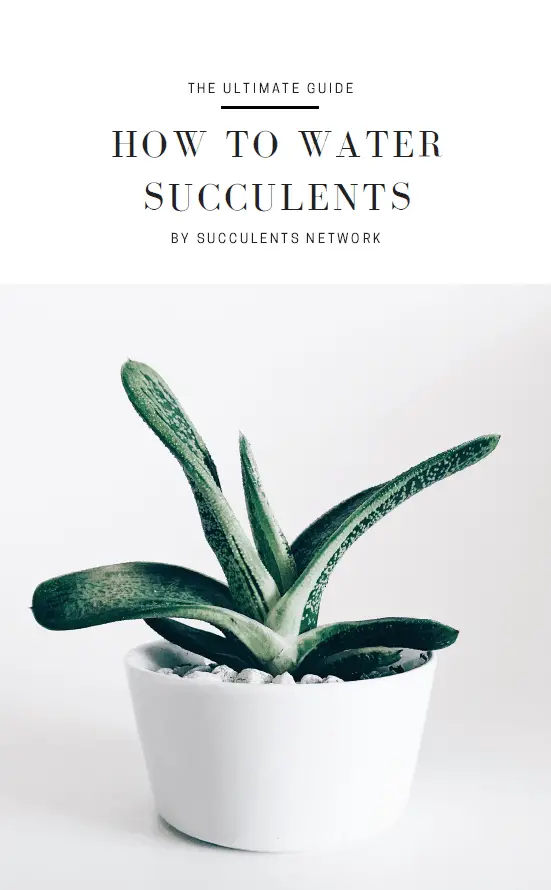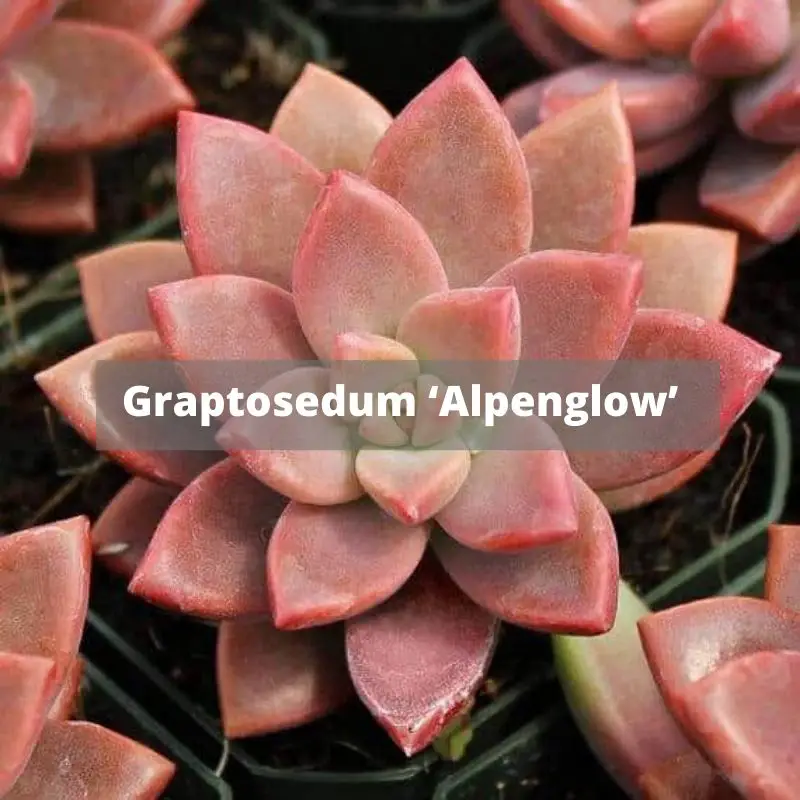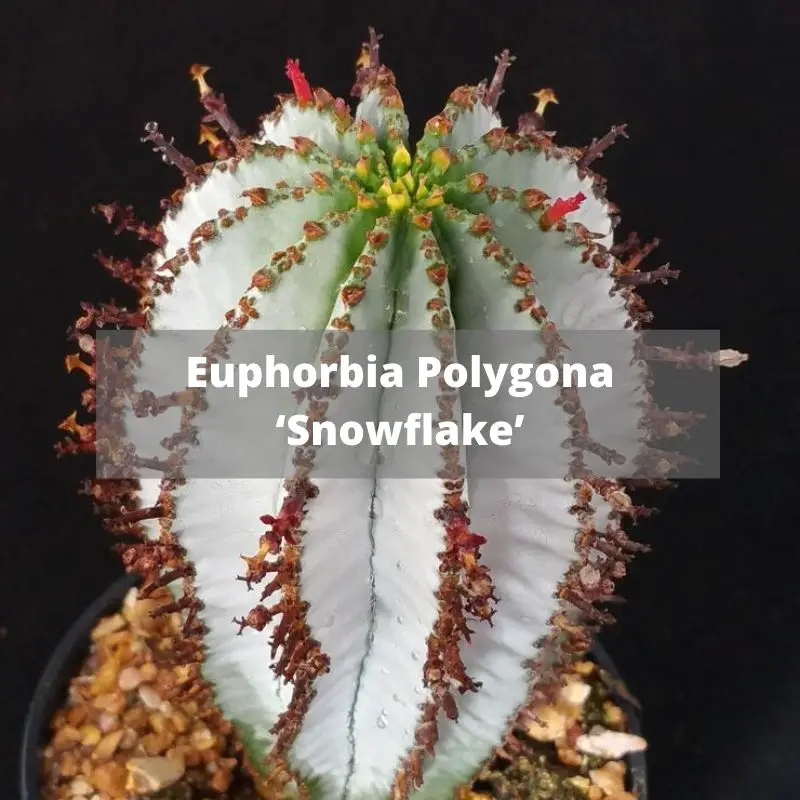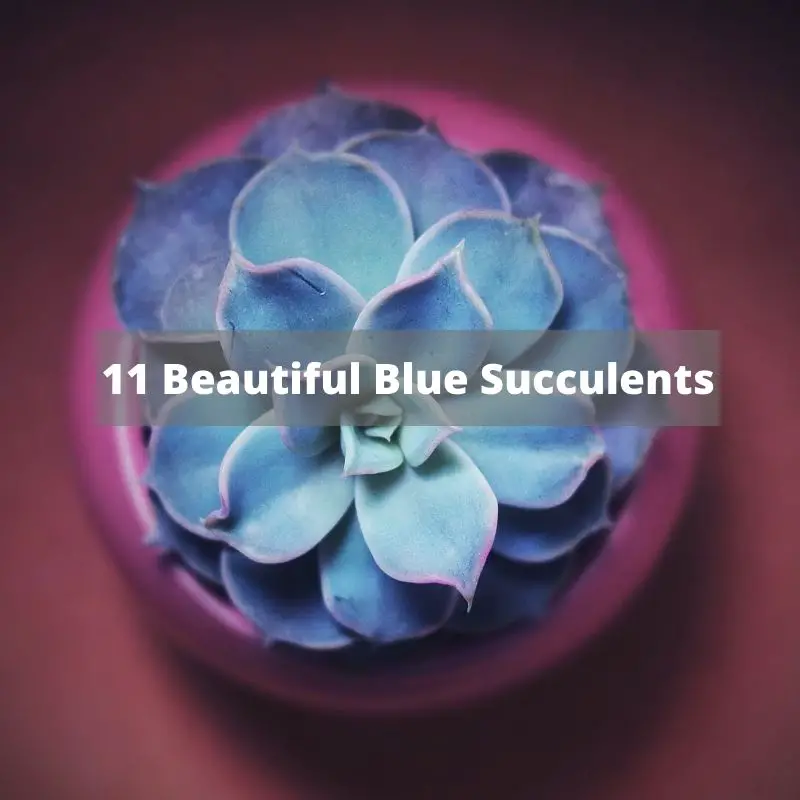Cactuses are known for being one of the hardiest and easiest plants to grow, and anyone who lacks a green- thumb but wants some live greenery in their home, will often opt for a cactus or two. Requiring little water or attention, the average cactus that you find in stores are quite common, and while they may have some distinct features, they aren’t considered rare. However, scattered across the globe you can find some of the
rarest cactus plants, set apart from the rest due to their remote locations, the fact that they are endangered, a special color, or because of a genetic mutation that has occurred. Below we will look at 13 of the rarest cactus plants and find out what exactly makes them so interesting.
Are your succulents dying? Do you need urgent help to keep them alive? Don’t worry! This ebook will solve the problems. I shared all my secrets related to how to water succulents with you.
Ruby Ball (Gymnocalycium mihanovichii)
One of the most popular things about the cactus is that they are easy to grow, and even easier to maintain, but that isn’t the case when it comes to one of the rarest cactus plants, the Ruby Ball.
Displaying a vibrant purple-red color, this tiny ball actually is unable to survive on its own, and requires a host in order to grow.
Anyone who wants to add the Ruby Ball to their collection will need to carefully graft it onto an existing cactus, when it can then use the host for food and support.

Picture via leafyplace
Totem Pole (Lophocereus schottii var. monstrosus)
Long, bumpy, and very smooth, the Totem Pole is one of the rarest cactus plants due to the fact that it is actually a mutation of a more common variety.
This naturally occurring mutation led to the Totem Pole growing into a very large misshapen plant that is only really found around the Baja California Peninsula.
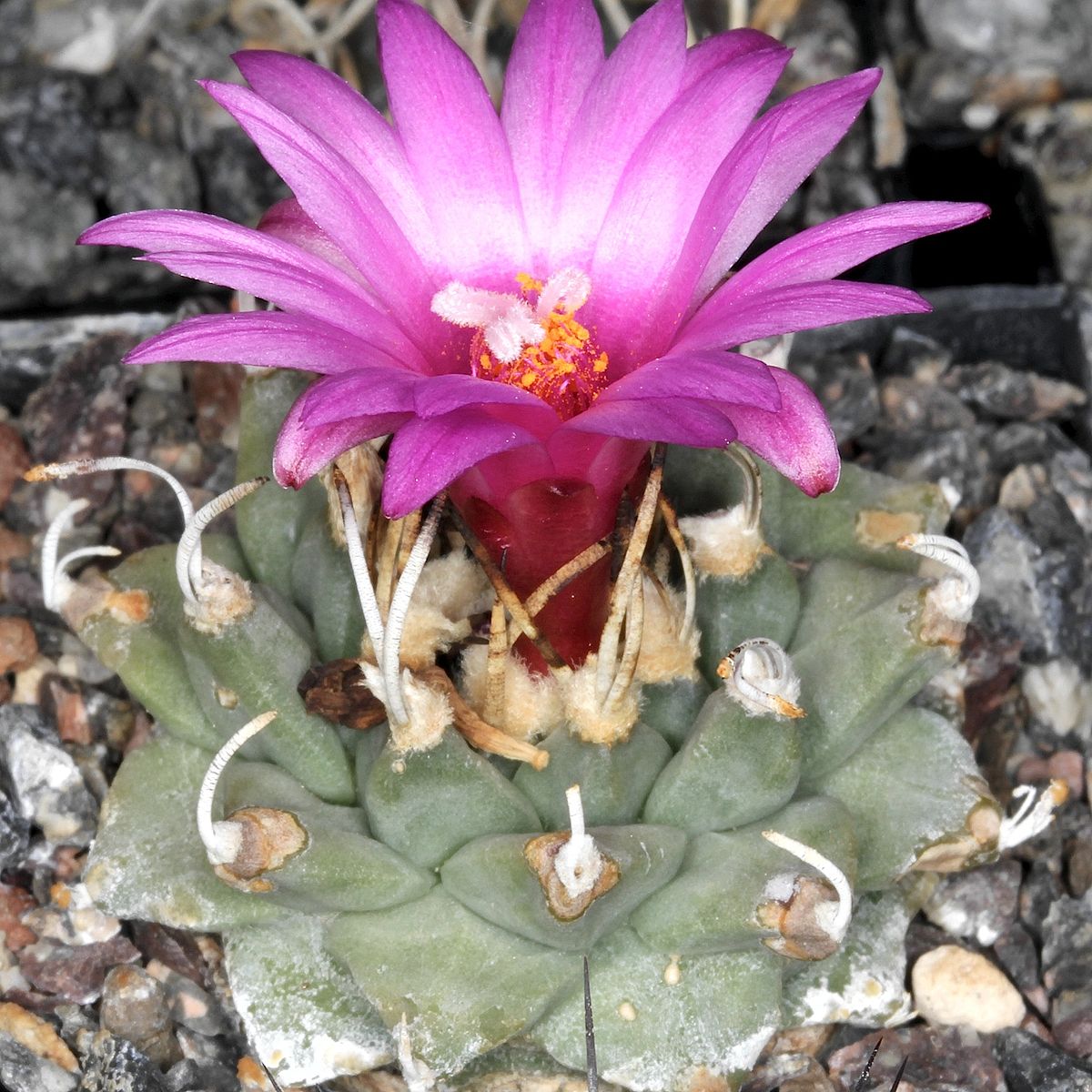
Picture via Wikimedia
Bizanguita (Turbinicarpus alonsoi)
Native only to Xichu, Guanajuato in Mexico, this tiny, solitary variety is easily one of the rarest cactus plants for a few different reasons.
Not only is it difficult to find in the world, but it also grows on rocky slopes about 1,9oom above sea-level.
Because of illegal harvesting, it is also listed as critically endangered, and there are less than 5,000 of them in the world today.
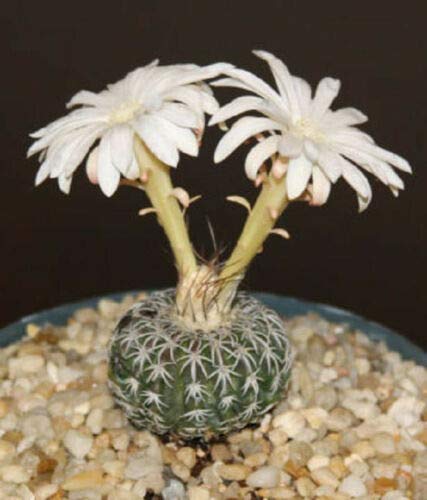
Picture via Amazon
Discocactus horstii
A prized variety among cactus enthusiasts, what makes this one of the rarest cactus plants is its beautiful white flower that is produced from the very top.
Incredibly exotic in appearance, they can only be found in 3 small areas within Brazil, and require quartz gravel for their roots.
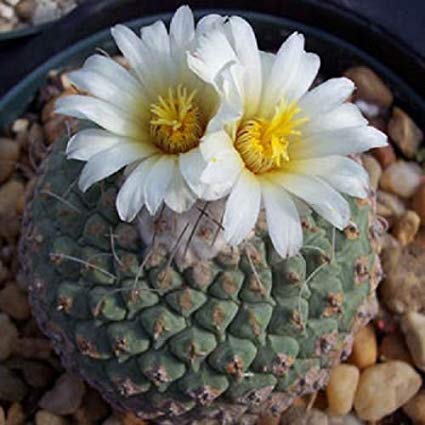
Picture via Amazon
Strombocactus disciformis
As the only existing variety within its genus, this is one of the rarest cactus plants in Mexico and can only be found growing on extremely steep cliffs.
Stumpy and rounded, it grows slowly but will eventually produce brilliant pink flowers along the top. Very solitary in nature, they can be difficult to find, and different plants will produce cream-colored flowers as well.
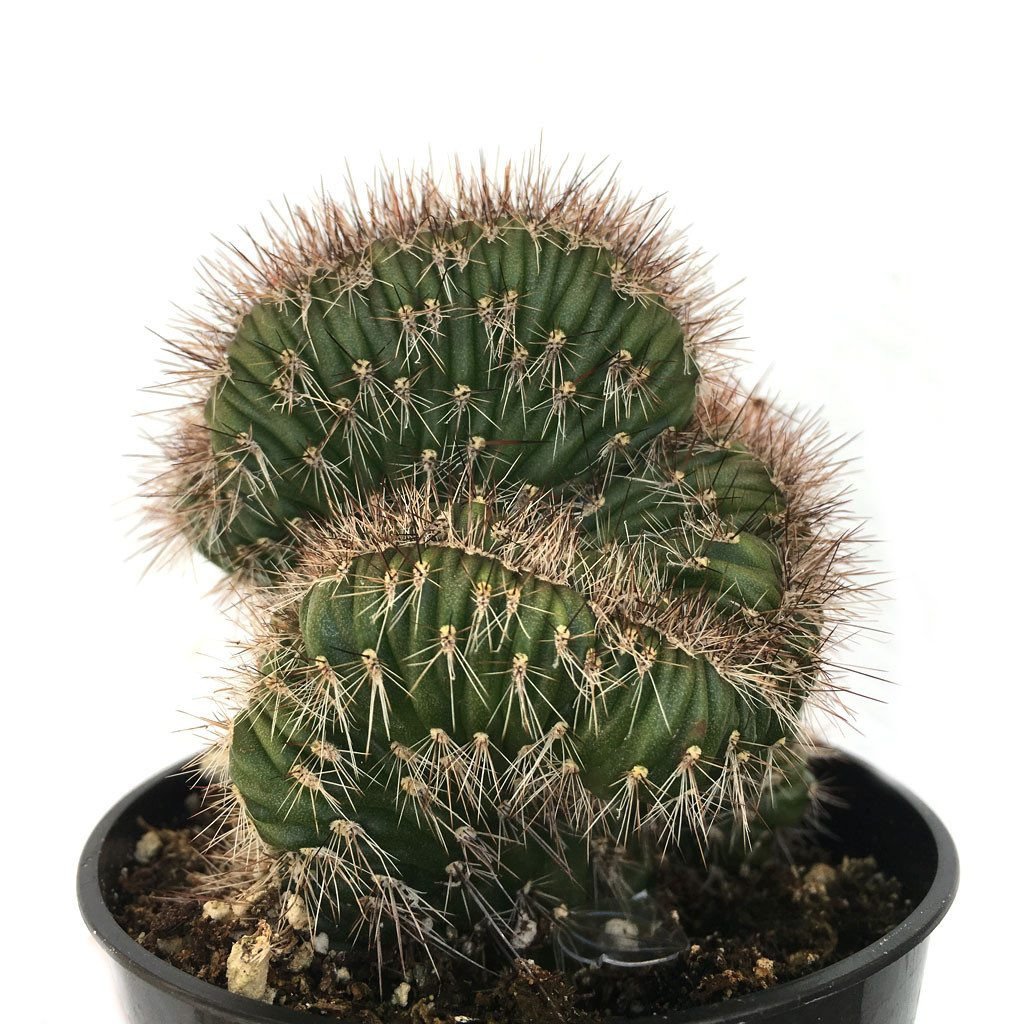
Picture via africa-seeds
Stenocereus Hollianus Cristata
While the Stenocereus cactus is much more common, this specific variety is unique because of the wave- shaped growth it experiences.
The dark purple tips blend into the curve wildly, making it an exotic addition to your collection of rarest cactus plants.
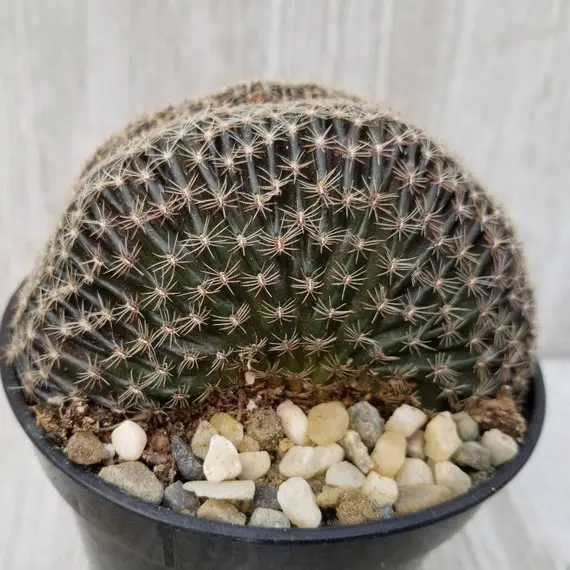
Picture via planetdesert
Orange Cob (Lobivia famatimensis cristata)
Eerily similar in shape to a brain, this variety is one of the rarest cactus plants due to both its strange shape as well as its difficulty to grow.
Like the Ruby Ball, it generally needs to be grafted onto another plant in order to thrive, but under certain circumstances, it can grow on its own.
Mammillaria glochidia var. xiloensis
Making it one of the rarest cactus plants is the fact that it has been extinct in the wild since 2013.
Comprised of tiny, egg-shaped balls this cactus can still be found for sale and is actually quite easy to cultivate and maintain.
Echinopsis cv. Chocolate
Brown in color and appearing like a bizarre mutation, this is one of the rarest cactus plants that you will find.
The appearance can almost be described as similar to a fungus, although it is sturdy with a tough, fleshy exterior.
Although it may not win any beauty contests, it certainly stands out in a collection.
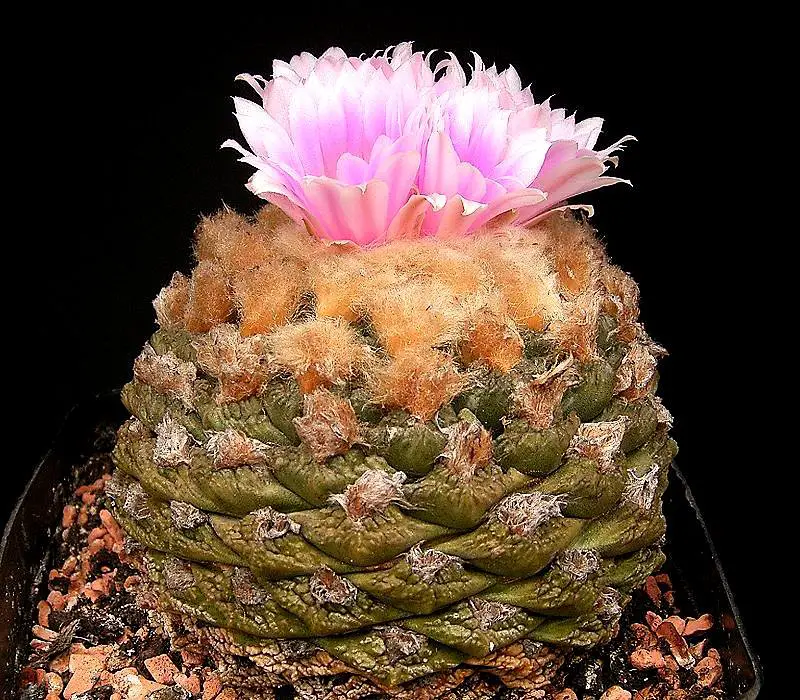
Picture via britannica
Living Rock (Ariocarpus Fissuratus)
Many of the rarest cactus plants make the list because they aren’t easy to find in the wild, but the Living Rock is featured because of its strange and intriguing appearance.
The greyish-green body is completely spineless, and instead of relying on the spikes to keep it protected in the wild, it actually produces a
psychoactive chemical to deter animals

Picture via flowersinisrael
Moonlight Cactus (Selenicereus)
What makes this variety one of the rarest cactus plants is not due to how hard it is to acquire, but actually because of how rare it is to see it blossom and flower.
Incredibly fragrant and beautiful, the Moonlight Cactus produces a flower which only remains in bloom for one single night.
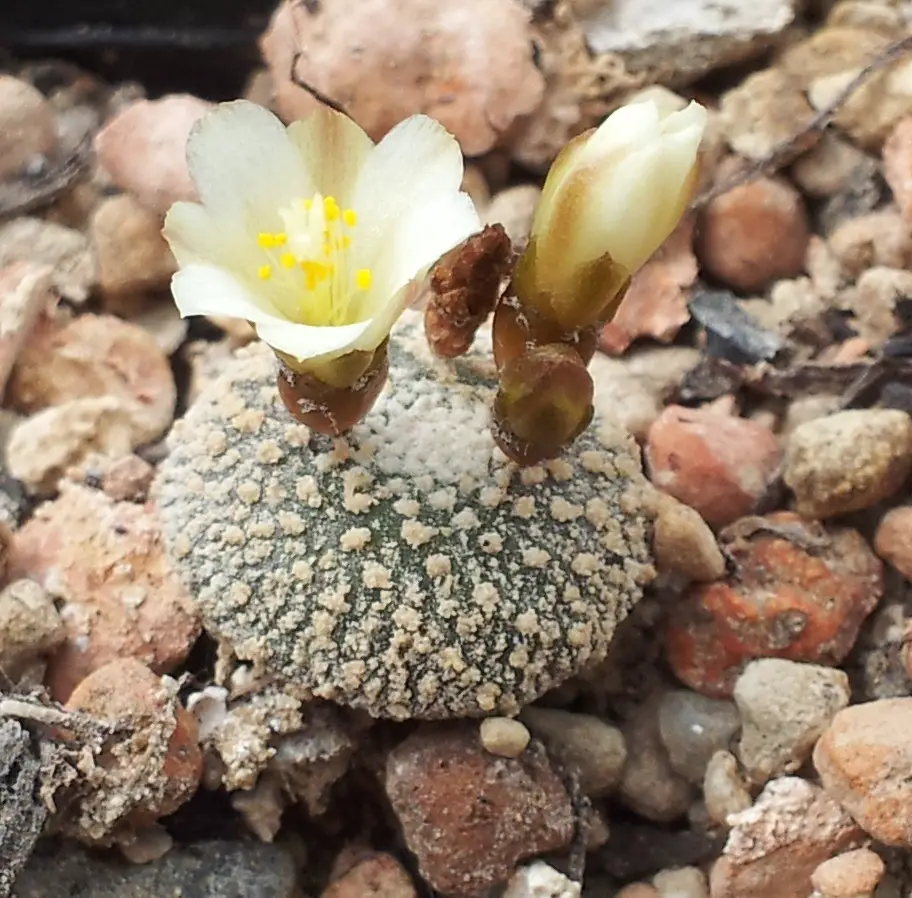
Picture via Wikimedia
Blossfeldia lilliputian
Given that this is the smallest cactus alive, it is easy to understand why it is one of the rarest cactus plants you can have in your home. Unlike most other varieties, it grows without any rib or spines, and instead is a rounded clump of small bulbs.
Although it is abundant in some small regions of Argentina and Bolivia, it is extremely difficult to cultivate and is unique in almost every aspect of its growth.
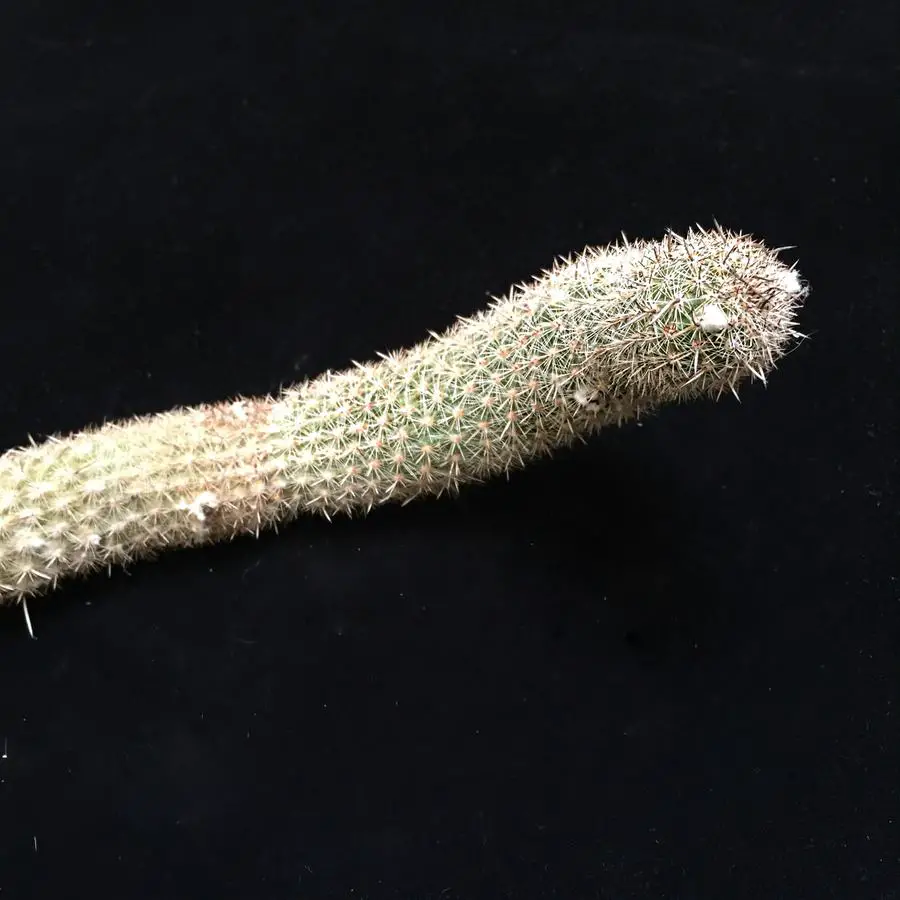
Picture via Facebook
Haageocereus tenuis
Closing out this list is actually one of the rarest cactus plants of all, and easily one of the most expensive. Listed for sale at $250,000, it is an extremely rare variety that is expected to be completely extinct by 2024.
Growing sideways with a long, curved body, its population has continued to decrease drastically over the years and it is only found between Chancay and Huacho, just north of Peru.
Able to survive over 2 years without any moisture, it makes it home within the ever-changing sand dunes and can be difficult to find because it is often covered in a layer of sand.
While typically not available for the average collector, there is hope that the species can be properly cultivated in order to extend its lifespan and continue to keep it around as the rarest cactus plant.

